Two I’s saw statehood coming
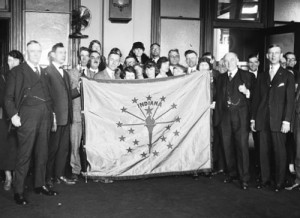
Merry Christmas, joyous New Year – and happy anniversary to two states celebrating their entries into the Union. In this case, the “I’s” have it: Indiana and Iowa. Eventually, but not immediately, both created state flags.
INDIANA
Two hundred years ago, the United States welcomed Indiana into the fold as it became the 19th state. President James Madison signed its admission on December 11, 1816.
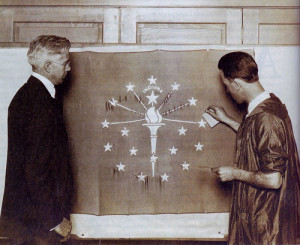
According to the state’s official history, “The vast majority of people in Indiana…approved the move to a democratic government which forbad slavery. The preamble to the [state] Constitution of 1816 reached far beyond the federal Bill of Rights. Some provisions of the Constitution – education, for example – were visionary.”
That was advanced, but it took 101 more years for the Hoosier state to get its own flag. Formally adopted in 1917, the state banner was the creation of Paul Hadley, a water-color artist who took part in a contest to design the flag.
 The blue flag is bright with yellow images: a torch to represent “liberty and enlightenment,” the state’s history says, along with rays to show off “their far-reaching influence.” Because Indiana was the 19th state, 19 stars decorate the banner, with an outer circle of 13 stars representing the original colonies.
The blue flag is bright with yellow images: a torch to represent “liberty and enlightenment,” the state’s history says, along with rays to show off “their far-reaching influence.” Because Indiana was the 19th state, 19 stars decorate the banner, with an outer circle of 13 stars representing the original colonies.
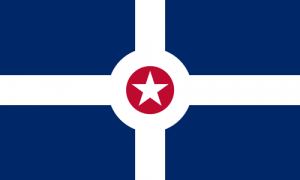
Indiana’s capital, Indianapolis, has its own city flag, made up of red, white and blue elements. Its central white star stands for the capital as well as the Soldiers and Sailors Monument in the city. The 1962 design is the work of Roger Gohl, a student at an Indiana art institute.
IOWA
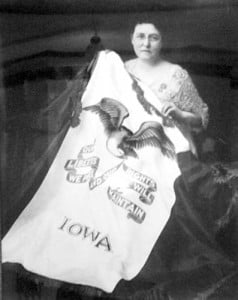
On December 28, 1846 (30 years after Indiana’s birth), Iowa was accepted into the Union. Just like Indiana, it would not have a state flag until the 20th century. In 1917, a commission established by the state to look into the possibility of a banner reported that “there is a positive, tangible requirement of an official Iowa State flag.”
A newspaper article pointed out that “Iowa seems to have been the only state in the union without a distinctive state flag.” That’s because many Iowans insisted that one flag – Old Glory – was enough for them. Nevertheless, Iowa got its own banner as well as an annual celebration: Every March 29, the citizens mark “Iowa State Flag Day.”
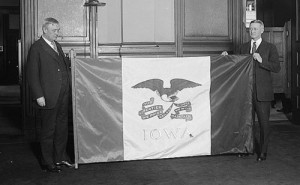
The state’s website explains that “the banner [was] designed by the Iowa society of the Daughters of the American Revolution.” More specifically, Dixie Cornell Gebhardt, DAR regent, is credited with the design, which “consists of three vertical stripes of blue, white, and red….On the central white stripe is…a spreading eagle bearing in its beak blue streamers on which is inscribed the state motto, ‘Our liberties we prize and our rights we will maintain.’” The word “Iowa” appears in red letters below the streamers.
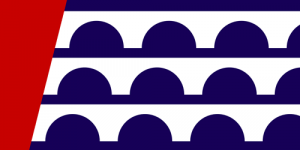
As for its capital, Des Moines, it has one of the more unusual city flags in America. Designed in 1974 by Walter Proctor and colored red, white and blue, the banner is abstract, with images meant to honor three bridges in the city.
